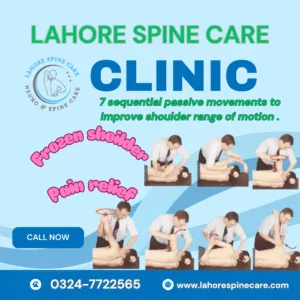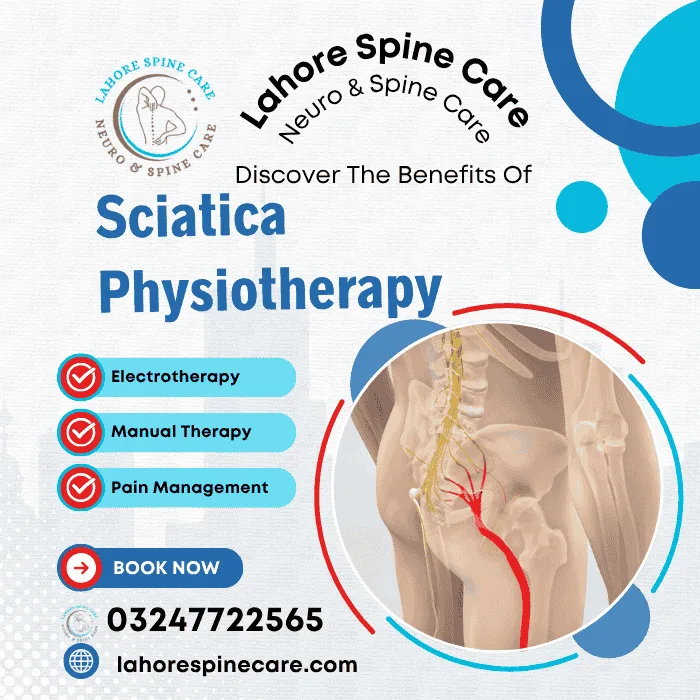
The Spencer Technique for Shoulder Pain Relief: How It Works and What to Expect
The Spencer Technique is one of many options of treatments that physical therapists and osteopathic

Sciatica is a very disabling type of nerve root pain that originates from the low back and radiates down the legs because of sciatic nerve irritation or compression. Whether you deal with the occasional discomfort or severe pain in your lower back and legs sciatica pain relief can be found in physiotherapy. Here are five important methods that can assist in the easing of some of the associated symptoms to enhance your experience of life:
Table of Contents
ToggleStretching is imperative in managing sciatica since muscle tension is seen as a preserve of sciatic nerve pinch. The following stretches are particularly beneficial: Piriformis Stretch: The only muscle that can also cause irritation to the sciatic nerve is called piriformis muscle situated at the buttocks. This stretch involves putting one of the legs across the other knee while pulling the latter towards the chest. This helps in a way reduce tension in the muscle. Hamstring Stretch: Also, tight muscles across the hips and legs including the hamstrings aggravate the sciatic nerve. Performing gentle forward bends, with a straight back and legs, reduces this tension allowing relief from the pain. Tip: They should be repeated 3 times, held for 20-30 seconds each, and should not include any bouncing or forcing the stretch in order to guard against injury.
The workout routine should also focus on strengthening some muscles of the spine and belly like the abdominal and lower back muscles that help keep pressure off the sciatic nerve. Toothpick thin body structure is disadvantageous because the axial-Skeleton’s middle part is usually week and this causes Postural and spinal abnormalities and these can be annoying to the Developing nerve. Bridging: This position is also easy to perform: Sit on an edge of a chair with your back straight and then put your feet onto the floor while your legs are flexed at the knees. Bend forward at the waist, keeping your back flat, and extend your arms in front of you; lift your hips upward toward the ceiling, involving your glutes and your abdominal muscles and hold for several consistently timed seconds before returning to the initial position. Planks: Get into plank position, with your hands, touching the floor with the palms, and your body from your head to your toes forming a straight line. It is advices that you put much effort in your stomach muscles to have strong abdomens. Daily to weekly, or even biweekly, core exercises will strengthen our posture, and this is crucial when seeking to manage sciatica for the long-term.
Massage therapy, manipulation, and mobilization are crucial and are done by physiotherapist to alleviate sciatic nerve compression. Using of TENS helps to augment the blood flow, relieve muscle spasm and restore the movement. Soft Tissue Massage: The physiotherapist can also massage the affected part in order to facilitates muscle relaxation and stimulate blood flow. It also helps reduce inflammation and to deal with the sciatic nerve pains. Spinal Mobilization: Slight manipulations on the spine will ensure that the compressed sciatic nerve is adjusted by pulled apart vertebrae which can provide instant pain relief. Manual therapy is more effective if used together with other activities that may best suit a particular patient.
Neural mobilization or nerve gliding is a special form of treatment meant to increase the laxity of the sciatic nerve. These movements ease the nerve through the tissue structures preventing the occurrences of pressure or inflammation. Sciatic Nerve Glide: Sitting with one leg to be straight and the other should be folded. Swing your head and shoulders forward and backward side by side and at the same time wiggle your toes towards your abdomen and then back again. For this stretch, Hanson explains it as helping “floss” the sciatic nerve to get at the knots so the muscle can relax and the pain can subside.
Employing good ergonomics when sitting is a major factor in avoiding sciatic pain especially to those who spend most of their time sitting. Some of the adverse effects of improper posture include spinal distortion and muscle unbalance, which are all likely to make sciatica worse. Ergonomic Adjustments: A physiotherapist can give information on ways that postures at the workplace or at home may be altered for a healthier position. This include height of the chairs, the right support for the back while sitting, and height of the computer monitor. Postural Exercises: To prevent ever worsening of the sciatica, one should undertake some postural exercises such as sitting pelvic tilt and shoulder blade squeeze, and the wall angels to ensure your postural muscles are strong enough to prevent leaning forward or slouching thus avoiding irritation of the sciatic nerve further.

The Spencer Technique is one of many options of treatments that physical therapists and osteopathic

How to choose the right shoe for spine health is more important for spine health

World Physiotherapy Day 2025 is celebrated every year on September 8 in the global physiotherapy

Clinical Impact & Professional Excellence Being in the field of practice with many years of

On the 14th of August each year, Pakistan proudly celebrates its Independence Day, an event

Who is Dr Ejaz Danish? Dr. Ejaz Danish is a physiotherapist based in Lahore and

LAHORE SPINE CARE is proudly powered by WordPress